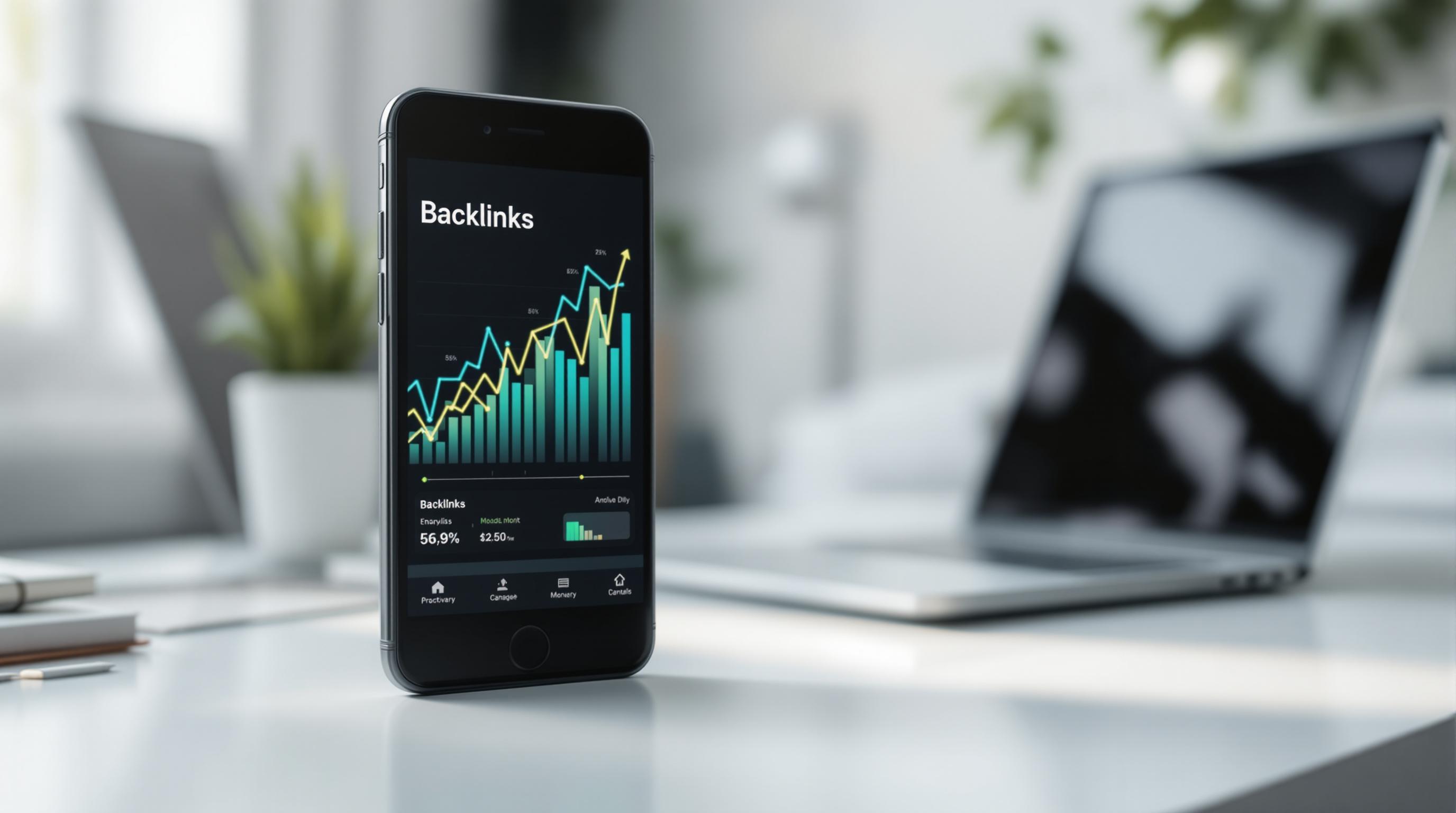Want to turn your website traffic into cash? Here's a quick breakdown of 5 key ad revenue models:
- CPM (Cost Per Thousand): Get paid for every 1,000 ad views
- CPC (Cost Per Click): Earn when someone clicks an ad
- CPD (Cost Per Day): Flat rate for daily ad space
- CPA (Cost Per Action): Payment for specific user actions (e.g., sales)
- CPL (Cost Per Lead): Earn for generating potential customer info
Quick Comparison:
| Model | Best For | Risk Level |
|---|---|---|
| CPM | Brand awareness | Low for publishers |
| CPC | Driving actions | Moderate |
| CPD | Short campaigns | Low |
| CPA | Performance | High for publishers |
| CPL | Lead generation | Moderate |
Each model has its strengths. CPM works for high-traffic sites, while CPA is great for driving sales. Your choice depends on your goals, audience, and risk tolerance. Mix and match to maximize your ad revenue.
Related video from YouTube
1. CPM (Cost Per Thousand Views)
CPM, or Cost Per Mille, is the price advertisers pay for every 1,000 ad impressions. It's all about getting eyeballs on ads, whether someone clicks or not.
Why CPM Matters
CPM is perfect for brand awareness campaigns. It's like digital billboard advertising - you're paying for visibility, not immediate action.
The CPM Landscape
CPM rates vary based on audience, niche, and timing. Here's a quick breakdown:
- Google Display Ads: $3.12 CPM
- Facebook Ads: $8.60 CPM
- Google Search Ads: $38.40 CPM
Why the big difference? Search ads catch people actively looking for something, so they cost more.
CPM in Action
In March 2023, Google AdSense switched from "pay per click" to "pay per thousand impressions". This means publishers now earn based on views, not clicks. It's a big deal for content creators.
Pros and Cons of CPM
Pros:
- Great for high-traffic sites
- Predictable revenue for publishers
- Ideal for brand awareness
Cons:
- Needs high traffic to be profitable
- No guarantee of engagement
- Less effective for direct response campaigns
Maximizing Your CPM
Want better CPM rates? Focus on:
- Ad Placement: Prime spots get prime rates. Above the fold and in-content placements work best.
- Content Quality: Keep users on your site longer with engaging content.
- Audience Demographics: Know your visitors and target accordingly.
- Seasonality: CPM rates often spike during holidays and major events.
With over 5 billion internet users worldwide and 2.14 billion eCommerce shoppers, there's plenty of opportunity in the digital ad space.
The Bottom Line
CPM isn't just about impressions - it's about making those impressions count. By optimizing for CPM, you can turn your website traffic into a steady revenue stream. Sometimes, just being seen is enough to make an impact.
2. CPC (Cost Per Click)
CPC, or Cost Per Click, is a big deal in digital advertising. It's how platforms like Google Ads and Facebook Ads charge advertisers. The concept? You pay when someone clicks your ad. Simple, but powerful.
Here's CPC in action: Your Google Ads campaign has a $2 CPC. Get 1,000 clicks? That's $2,000. But there's more to it than just math.
Why does CPC matter? It's all about action. Unlike models that charge for views, CPC only costs you when someone engages. It's perfect for:
- Getting more website visitors
- Increasing sales
- Grabbing leads
CPC isn't one-size-fits-all. Different platforms have different rates:
- Google Ads: $2.32 per click (average)
- Facebook Ads: $1.35 per click
- LinkedIn Ads: $5.26 per click
But watch out - these numbers can swing wildly. In competitive fields like law or insurance, you might shell out $20 or more per click!
Want to make your CPC work harder? Try these:
- Make better ads: Quality ads can lower your CPC. Write compelling copy that matches your keywords.
- Get specific with keywords: Ditch broad terms. Go for specific, less competitive keywords to lower costs and still reach your audience.
- Improve your landing pages: Make sure they match your ads. It can boost your quality score and potentially lower your CPC.
- Use negative keywords: Block irrelevant searches to avoid wasted clicks and keep your CPC down.
CPC isn't always the best choice. Here's a quick comparison:
| Model | Good For | Main Benefit |
|---|---|---|
| CPC | Specific actions | Pay for engagement |
| CPM | Brand awareness | Wide reach |
| CPA | Sales focus | Pay for conversions |
The takeaway? CPC can be a powerhouse for your ads, especially when you want specific actions. Focus on quality, targeting, and constant tweaking. Remember, it's not just about getting clicks - it's about getting the RIGHT clicks that turn into sales and growth.
3. CPD (Cost Per Day)
CPD, or Cost Per Day, is a no-frills ad model. You pay a flat rate for a day's worth of ad space. It's like renting a billboard - you're buying time, not clicks or views.
How It Works
It's pretty simple:
- Fork over a set amount upfront
- Your ad runs for a full day (or whatever time you agreed on)
- Your ad stays up, no matter what
The math? CPD = Total Budget / Number of Days
When to Use It
CPD isn't for everyone, but it's great for:
- Getting your brand out there
- Pushing an event
- Showing off a new product
The Good and the Bad
CPD's got its perks and quirks:
| Pros | Cons |
|---|---|
| You know what you're spending | Can hit your wallet hard |
| Your ad's guaranteed to be seen | Not as flexible as other models |
| Works well for short campaigns | Tough to pin down exact ROI |
Real-World Example
Take Fliphound, a digital billboard platform. They use CPD, and guess what? Over 85% of their advertisers are new to outdoor ads. Why? CPD makes it easy to plan and budget.
Making It Work
Want to nail your CPD campaign? Here's how:
- Pick high-traffic spots (they cost more, but you'll get more eyes)
- Time it right (sync up with events or busy seasons)
- Keep tabs on overall performance (you can still tweak things)
Just remember: CPD isn't about instant sales. It's about getting seen and staying on people's minds. Use it as part of your bigger game plan, mixing it up with other ad models for best results.
sbb-itb-645e3f7
4. CPA (Cost Per Action)
CPA, or Cost Per Action, is the performance marketer's dream. It's simple: advertisers only pay when someone takes a specific action. This could be buying a product or signing up for a newsletter.
Why's CPA getting so much attention? Two reasons:
- It's all about results. You're not paying for views or clicks. You're paying for actual conversions.
- It's a win-win. Advertisers get guaranteed actions. Publishers work harder to make those conversions happen.
But let's be real: CPA isn't always easy. It's a high-stakes game that can be tough for publishers to master.
CPA in the Real World
Here's a real example: In 2022, a big cosmetics brand teamed up with an Instagram beauty influencer to sell lipstick. The deal? The influencer got $5 for every $50 lipstick sold. The result? A 10:1 return on ad spend (ROAS). That's CPA in action.
CPA by the Numbers
CPA rates can vary a lot. It depends on the industry and what action you're after. Here's a quick look:
- Average CPA commission: Up to $50 per action
- High-end programs: $1,000+ per interaction
But don't get too excited. These aren't guaranteed paydays. CPA marketing takes skill, strategy, and a bit of luck.
Making CPA Work
Whether you're selling ads or running a website, here's how to win at CPA:
- Know your audience. The more relevant your offer, the more likely people are to take action.
- Choose wisely. If you're a publisher, pick offers that match your skills and audience.
- Keep improving. Always test and tweak your campaigns. Small changes can lead to big wins in CPA.
- Build trust. Have a legit website and offer real value. In CPA, trust is everything.
CPA is all about performance. It's not about how many people see your ad. It's about how many take action. As one expert put it, "CPA marketing is a strong player in the race against other businesses."
So, is CPA right for you? If you're good at driving specific actions and know your audience well, it could be your ticket to success. Just be ready to put in the work. In CPA, results are everything.
5. CPL (Cost Per Lead)
Cost Per Lead (CPL) is the unsung hero of performance marketing. It's about paying for potential customers, not just eyeballs or clicks.
With CPL, you only pay when someone becomes a lead. This could mean filling out a form, signing up for a newsletter, or requesting a demo.
Why CPL matters:
- It's results-driven. You pay for potential customers, not maybes.
- It's measurable. Tracking ROI is straightforward.
- It aligns marketing and sales. Both teams focus on quality leads.
But here's the thing: CPL isn't one-size-fits-all. It varies across industries:
- Software & Tech: $60 to $120+
- Healthcare: $20 to $40
- E-commerce: $10 to $30
These numbers reflect the value of leads in each industry. A potential software client is worth more than someone buying a t-shirt.
CPL in Action
Let's crunch some numbers. You run a campaign with a $5,000 budget and generate 100 leads. Your CPL? $50. Good or bad?
It depends on your conversion rate and average order value (AOV). If your AOV is $500 and you convert 20% of leads, you're making $100 per lead. Suddenly, that $50 CPL looks pretty good.
Nailing Your CPL Strategy
Want to make CPL work for you? Try these:
- Know your numbers. Zeke Domowski from Creatively Innovative says, "Know your client's numbers. It's not all about you. It's about the relationship with them and helping them grow."
- Optimize landing pages. Better user experience can lower CPL and boost conversions.
- Refine targeting. More relevant audience = lower CPL.
- Track and adjust. Ryan Kelly from Pear Analytics advises, "We'll help set up the flow of leads into the CRM and mark the leads with the channel and even the campaign source."
A "good" CPL isn't just about the number. It's about the relationship between CPL, conversion rate, and customer value. If you're spending $50 to acquire a lead that turns into a $5,000 sale, that's a win.
CPL isn't just another marketing acronym. It's a powerful tool for measuring and optimizing your lead generation efforts. Use it wisely, and you'll turn your marketing budget into a lead-generating machine.
How These Models Stack Up
Ad revenue models aren't one-size-fits-all. Each has its pros and cons. Let's compare CPM, CPC, CPD, CPA, and CPL:
CPM (Cost Per Thousand Impressions)
It's simple: pay per 1,000 views. Great for brand awareness if you've got tons of traffic. But views don't always mean engagement.
CPC (Cost Per Click)
You only pay when someone clicks. It's action-oriented and works for both sides if you're after specific results.
CPD (Cost Per Day)
Flat rate for daily ad space. It's predictable and perfect for short campaigns or event promos.
CPA (Cost Per Action)
The performance marketer's favorite. Pay only for specific actions like sales or sign-ups. Low risk for advertisers, but tough for publishers.
CPL (Cost Per Lead)
All about getting potential customers. It's measurable but lead value can vary wildly.
Here's a quick comparison:
| Model | Best For | Earnings Potential | Required Resources | Risk Level |
|---|---|---|---|---|
| CPM | Brand awareness | Moderate | High traffic | Low for publishers, High for advertisers |
| CPC | Driving specific actions | High | Optimized content, Strong CTR | Moderate |
| CPD | Short-term campaigns | Predictable | Prime ad space | Low |
| CPA | Performance-driven campaigns | Very High | Conversion-optimized funnel | High for publishers, Low for advertisers |
| CPL | Lead generation | High | Quality content, Strong audience targeting | Moderate |
Andriy Liulko, Chief Sales Officer at a top ad network, says:
"Publishers have historically used the CPM model. Even when they know they receive payment for conversions, they still calculate the results in eCPM. Alternatively, advertisers have very precise KPI for their ad campaigns. They prefer qualitative pricing models, such as CPC or CPA, requiring ad networks not only to 'spend the budgets' or 'ensure audience reach' but to generate new leads and boost sales."
This shows a key point: publishers like predictable CPM, but advertisers want performance-based models like CPC and CPA.
Choosing your model? Think about your goals:
1. Brand awareness? Go for CPM or CPD. Your ad gets seen, even if no one acts right away.
2. Want traffic? CPC is your friend. You're paying for interested users who clicked.
3. After conversions? Try CPA or CPL, especially if your funnel's solid.
4. Need budget certainty? CPD is straightforward, but might not be the most cost-effective.
Your mileage may vary based on industry, audience, and campaign goals. Test different models or mix them up to find what works best.
In digital advertising, flexibility is key. Watch your metrics, adjust your strategy, and don't be scared to try new things to boost your ad revenue.
Conclusion
Let's wrap up our deep dive into CPM, CPC, CPD, CPA, and CPL models. Here's what you need to know:
Know Your Audience
Different models work for different crowds. Want brand awareness? CPM might be your thing. Looking for direct actions? CPC or CPA could be the way to go.
Risk vs. Reward
Each model has its pros and cons. CPM gives steady revenue but needs lots of traffic. CPA can pay off big but puts more risk on publishers.
Here's what Andriy Liulko, Chief Sales Officer at a top ad network, says:
"Publishers have historically used the CPM model. Even when they know they receive payment for conversions, they still calculate the results in eCPM. Alternatively, advertisers have very precise KPI for their ad campaigns. They prefer qualitative pricing models, such as CPC or CPA, requiring ad networks not only to 'spend the budgets' or 'ensure audience reach' but to generate new leads and boost sales."
Match Your Goals
Want quick sales? Think CPA. Building brand recognition? Look at CPM or CPD.
Be Ready to Switch It Up
The digital world changes fast. What works now might not work later. Be ready to change your game plan.
Matt Tanner, Head of Developer Relations at Moesif, puts it this way:
"The right monetization model not only drives revenue but also shapes your business's overall customer experience and long-term success."
Keep an Eye on Things
Check your numbers regularly. Try A/B testing to make your strategies better. Small changes can make a big difference in your ad money.
Mix and Match
Don't stick to just one model. Many publishers use a mix to make the most money.
FAQs
What's the deal with CPC and CPD?
CPC and CPD are two different ways advertisers pay for ads:
CPC (Cost Per Click): You only pay when someone clicks your ad. It's all about action. Great if you want people to visit your site or buy something.
CPD (Cost Per Day): You pay a flat rate each day your ad shows up. Doesn't matter if people click or not. It's perfect for short campaigns or promoting events.
The big difference? CPC is all about engagement (clicks), while CPD is about time (daily exposure).
How do CPM and CPD work?
CPM and CPD are two popular ways to price ads:
CPM (Cost Per Thousand): You pay for every 1,000 times your ad pops up. Let's say you agree to $2 CPM. You'll fork over $2 for every 1,000 ad appearances. Brands love this for getting their name out there.
CPD (Cost Per Day): As we mentioned, it's a flat daily rate. Your ad shows up, and you pay the same amount each day. Simple and predictable.
The main difference? CPM is all about how many eyeballs see your ad, while CPD is a fixed daily cost, no matter what.
Both have their place in the ad world. CPM can be a bargain for high-traffic sites, while CPD gives advertisers a clear idea of their daily spend.


